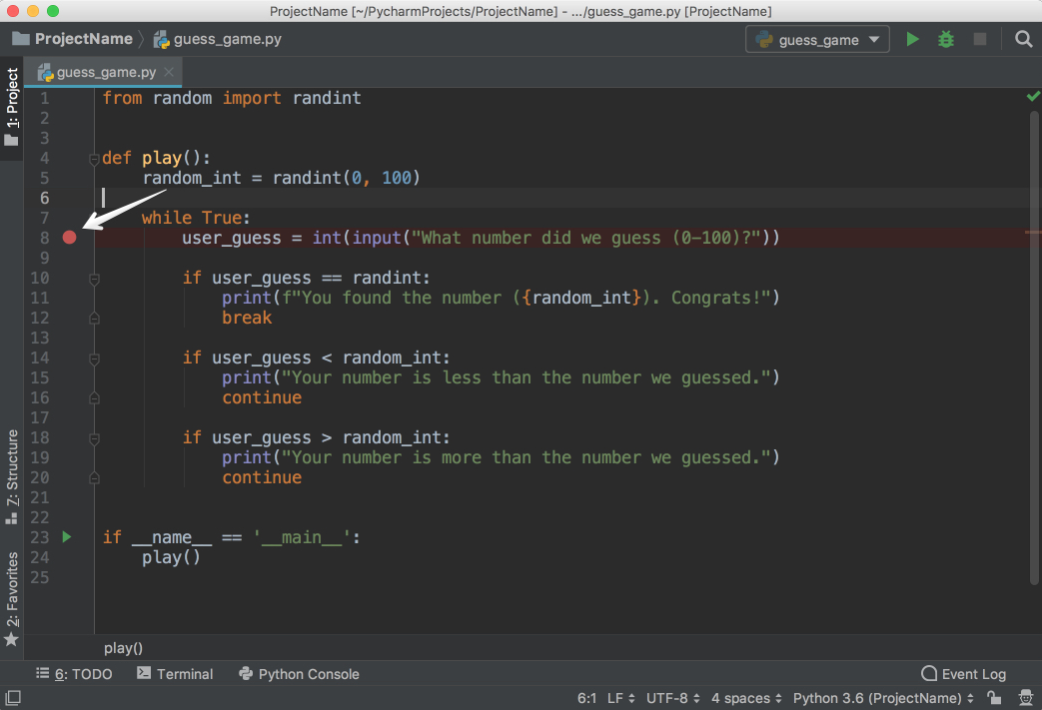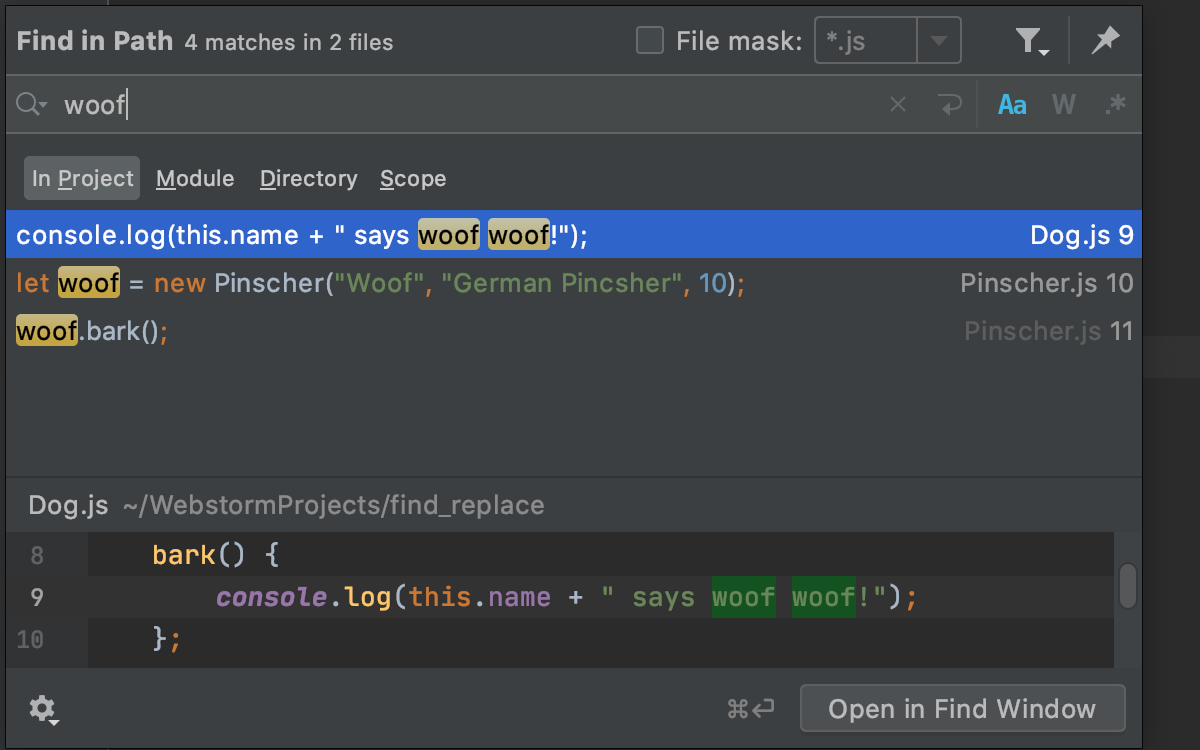
This is available by moving your cursor over a symbol and firing a keyboard shortcut (I think it’s also available as a mouse action.) More often I use the Goto Declaration feature. I use this when I know where I want to go by name. The first is Goto Symbol, which opens a popup similar to the one provided for completion of fields on an object, except that it includes symbols across the entire project. P圜harm has a couple of these features - pretty much everything you’d hope from a Python IDE.
#Pycharm search all files code
What I mean by Code Navigation is the use of keyboard shortcuts that jump you to the definition of a symbol. My only request is that word expansion could work across all open files, like it does in Vim, rather than just the current file. And you can always fall back to simple word expansion when you need to. You really feel that you’re using a well-engineered tool built for the future of programming - editing the meaning of code, not just text. P圜harm’s completion is intelligent and reliable, and works with JavaScript too.


I’ve always found Python completion features in other editors, usually built on the Rope library, slow or unreliable or both. Rather than being aware of a structure or object, the completion works through simple text matching. Word expansion is a new feature in P圜harm 3 that lets you complete symbols anywhere in the file, including comments and docstrings. Once you trigger this completion dialog, you can type to filter the selection. With structural completion, P圜harm displays a modal dialog containing fields of an object’s class first, followed by fields and methods of its superclasses and mixins. There are now two types of completion in the editor: structural, which understands Python and JavaScript objects, and word expansion, which is more like Vim’s omnicomplete. Code CompletionĬode completion was great in P圜harm 2.7 and it has only gotten better. See the Keyboard Shortcuts section for a more in-depth review of the keybinding system.
#Pycharm search all files plus
So, that’s a drag, but I was once a hardcore Vim user and here I am, two plus years of P圜harm later, happy and satisfied. I am confident that this will improve once we can remap the leader key. on PCs) with various keys to produce unique sequences. I don’t want to use backslash as my leader key, so I still end up combining Control, Command, Option (or Alt, Win, etc. What needs workĬustom keybindings have come a long way, but without a mappable leader they still work more like they do in Emacs and Sublime Text than in Vim. The company releases regular updates to IdeaVim, and the plugin has become much more feature-rich and reliable over time.

In addition to that, JetBrains is committed to Vim emulation. Some of the the newer changes are the addition of leader key support, which I was very excited about, and support for an ~/.ideavimrc file that can have key mappings ( :map, :nmap, :imap) and a limited number of set commands. There is a good list of all the Vim features the plugin supports. The ex command line is slick, block cursor and line highlighting look great, modal editing is responsive and IdeaVim supports all of the motion commands I use on a regular basis.

I’ve discarded a lot of editors that claimed to have Vim emulation either built-in or through a plugin.
#Pycharm search all files software
My perspective is that of a professional software developer who has used Vim, Emacs, Sublime Text, PyDev and others. I’ll try to cut straight to the point while offering some tips from my experience. This review is for the Professional Edition of P圜harm 3.


 0 kommentar(er)
0 kommentar(er)
